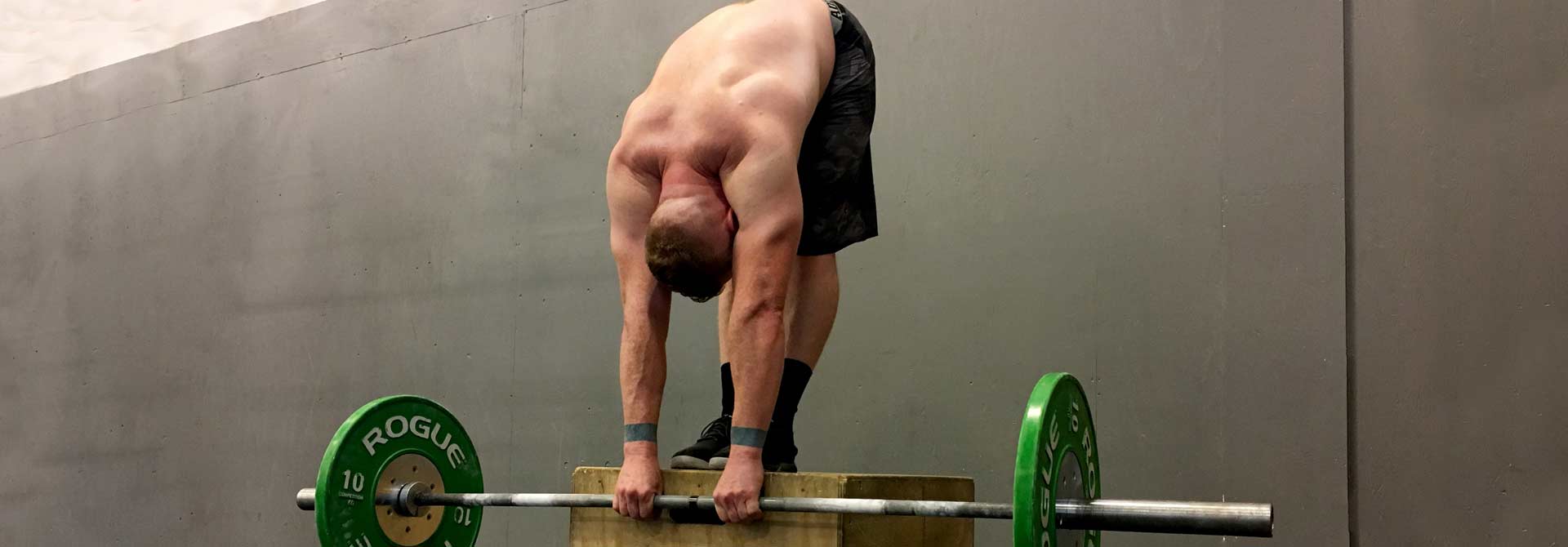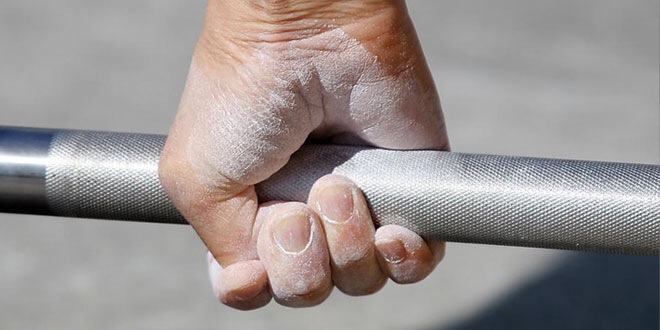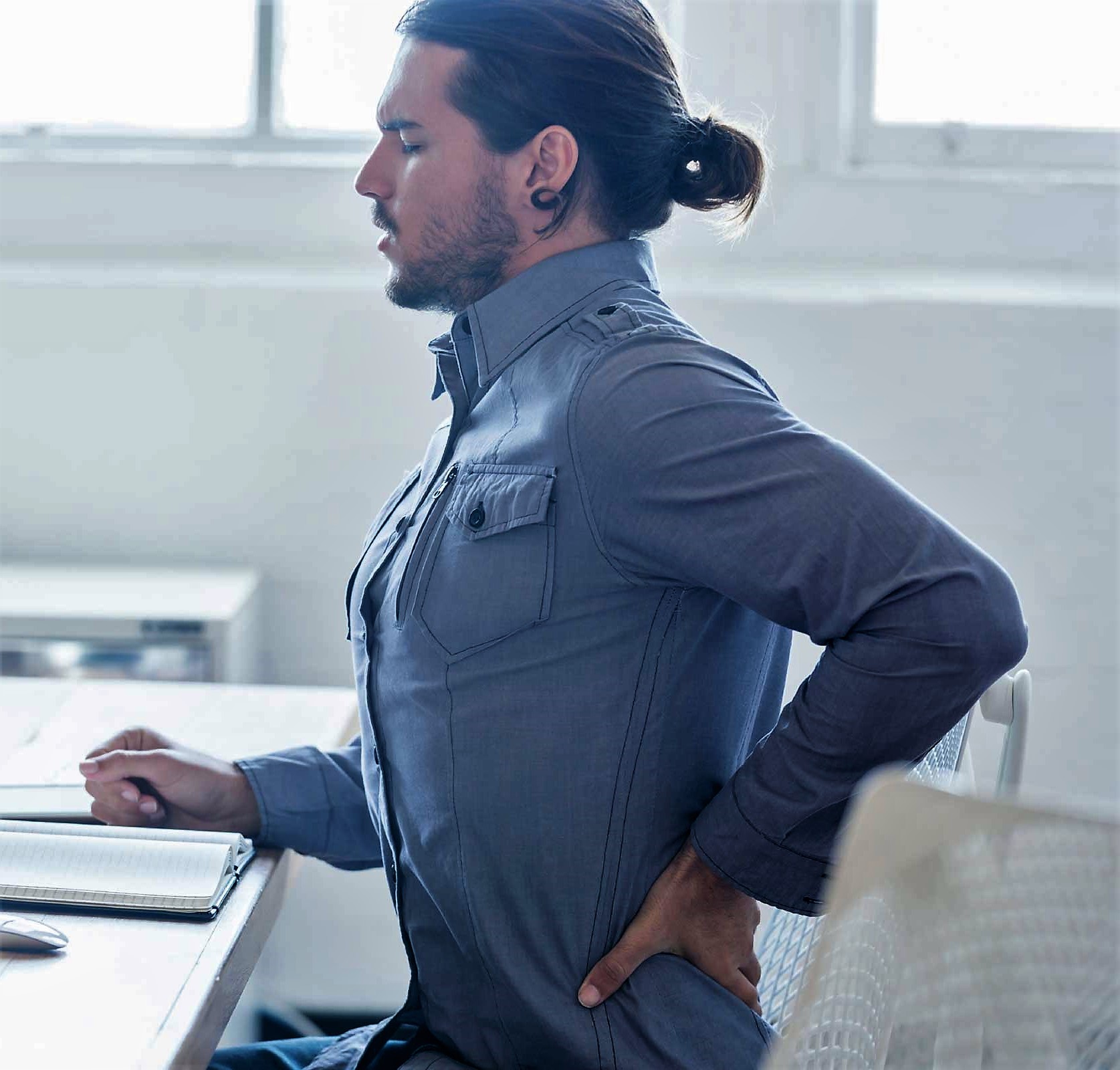Mobility is a little bit of magic word in weightlifting and powerlifting, especially as new people are popping into the weight room and are finding that some things aren’t quite as easy to do as seen on Instagram or Reddit.
A lot of people struggle to get into a proper bottom position in the squat, painlessly press weight overhead, or do a bench press in anything resembling proper powerlifting form.
But how does mobility feed into that? And where does mobility differentiate itself from flexibility? And how much does mobility actually matter, versus just lacking the strength or body awareness to properly follow form?
Having spent a couple years as a beginner fucking around with mobility issues before jumping into the powerlifting world, I can guarantee that some people just naturally struggle with certain positions and movements – but to identify what you should be doing to remedy these issues, you have to better understand what mobility even is.
Mobility vs. Flexibility
Mobility and flexibility are two separate terms. I’ve often explained to friends of mine that flexibility involves your ability to stretch in certain positions and angles, while mobility means going through the full range of motion on a technique.
Most people who don’t suffer from disabilities are naturally capable of walking, sitting, and jumping, and have the mobility to do so. But give them a barbell, and they may struggle to do a squat, and most will definitely struggle with something as complex as a snatch.
Flexibility isn’t just touching your toes – being flexible is an arbitrary qualification, based entirely on what an individual’s standard of flexibility might be.
Lifelong wushu practitioners or Olympic gymnasts spit and laugh at your definition of flexibility, and they in turn are made to blush and stare in awe while the freaky circus contortionist folds themselves into a suitcase.
But just like how those contortionists struggle with connective tissue problems most of the time, there is such a thing as focusing way too much on mobility, especially when you have enough of it.
In powerlifting, your mobility requirements are pretty low. The squat, deadlift and bench press were turned into competition lifts in order to create an alternative to weightlifting that everyone can compete in.
Meaning these are supposed to be lifts you can learn and excel at without a coach or strenuous stretching. Sadly, years of sitting in front of desks and driving cars instead of walking around and doing manual labor has most people struggling with tight hip flexors and messed up shoulders, mitigated by a mere 5-10 hours of training per week.
If you have a 40-hour workweek and have an office job, chances are you’re going to need to be more proactive with your mobility efforts.
Mobility vs. Strength
If you can squat without a bar, but suddenly fall apart under the barbell, you’re not struggling with mobility – you’re just weak and need more training, or your form is off, and you need more practice, both of which amount to the same thing: more lifting, but with a lighter bar, or using a progression exercise like the goblet squat.
The same thing goes for pressing overhead – there’s a very simple way to test adequate shoulder mobility as I’ll explain later, and if you’ve got said mobility, any struggles with the overhead press can usually be fixed by pressing overhead more often.
This is where I run into the issue that a lot of intermediate trainees need to understand: specificity is important, and as a novice and intermediate lifter, most of your time should be spent training the three lifts or doing accessories to address your sticking points.
Cardio and mobility work for the purposes of lifting more weight can help but should be minimal. Do cardio thrice a week, and warm up before you lift, but don’t spend an entire hour going trying to be supple leopard when you really just need to be a not-super-stiff human.
Unless powerlifting is just a stepping stone to Ido Portal-land for you (much love and good luck, in that case). So – identify if you’re really struggling with a lift because you lack the mobility for it, or if you’re just not strong enough to go through the full range of motion. If the latter is the case, then you have to get stronger.
Should You Care About Mobility?
Mobility is a buzzword that’s thrown around a lot, and everyone has the right to be skeptical of it. One of the main issues with mobility is that there’s a difference between performing a squat and performing the squat. Unless you share the same body structure, there’s very little reason nor point in squatting like Clarence Kennedy. The rules and cues for the squat are:
- Hip socket below kneecap.
- Knees pointing in the same direction as your middle toe.
- Feet flat on the ground, with the weight on your midfoot, rather than the heels or ball.
- Chest out, spine in neutral position, bar path straight and over your centerline.
- Neck in line with the spine, eyes looking roughly a few feet in front of you.
That’s it. You don’t have to keep your feet at shoulder width, you don’t have to point your toes perfectly forward, you don’t have to caress the ground with your ass cheeks. Take a really deep breath, hold it in, dip down and come back up. If you can do that, then you don’t need mobility work.
It’s About Weakness
If you can’t do that, you have to identify why, and work on it through mobility or by addressing weaknesses. If your knees are buckling, for example, that’s not a mobility issue, but rather you just have too much weight on the bar and can’t keep your knees out.
If your back isn’t straight or your bar path shoots forward, you’ve got a weak core or can’t brace right. You may just not be “tight” enough, insofar that you’re not sure how to pull together your entire body’s strength to perform a full squat or a heavy deadlift, rather than going through the motions, cue after cue, limp and uninspired.
If your goal is lifting more weight, care about mobility insofar that it improves your ability to lift the weight, not your ability to emulate someone else’s form. We all have different bodies, and different limitations that we have to work out.
Mobility and Levers
We can’t help the way we’re built. There are very few things a person can do to change the way they physically grow up, and since most people become interested in powerlifting a good bit after puberty has commenced, it’s unlikely that there’s anything they can do to change their leverages. Neither should they – our height, limb length, torso length, and even our ability to hold or shed fat is largely genetically predisposed.
Like poker, life is about dealing with the cards you’re dealt. And this goes for powerlifting, as well. Genetics play a big role in how much you’ll life and how much you’ll weigh, but you can adapt your form to suit your genetics.
Long arms love the deadlift, but perform worse on the bench, and your pushing strength depends a lot on your predetermined biacromial width – the distance from one shoulder, specifically where the arm inserts in the socket, to the other socket.
Dealing With Leverages
Leverages in lifting affect form. If you have long arms and short shoulders, you’re actually stronger with a narrower grip, taking full advantage of the length and proportionate potential strength of your tricep muscles. Meanwhile, your chest muscles have to contribute to the lift as well, but you get to put less pressure on them.
Having long femurs (thigh bone) means requiring a greater bend at the hips and ankles to get into a squat position. Consequently, it also means you have longer quad muscles, and, if you’re willing to pack on the weight, more potential leg strength.
But that means more training, more eating, and more time spent warming your ankles and hips up to the task of squatting heavy weight, especially if you spend most of every day sitting around.
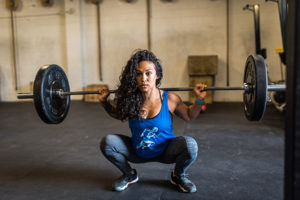 The shoulders and hips are the major mobility sticking points for powerlifting, and they’re also where your levers matter the most.
The shoulders and hips are the major mobility sticking points for powerlifting, and they’re also where your levers matter the most.
Longer arms and longer legs bring pros and cons, as do longer or shorter torsos. If your legs are too damn long and your ankles are too damn inflexible, then consider not only working on your ankle dorsiflexion, but adopt a wider squat stance to reduce your range of motion. You don’t have to go full Westside and sumo-stance it, but don’t bother with the narrow squat mentality if you just don’t have the bones for it.
Before you consider mobility exercises, make sure you’re adapting your form to your body. Check up on what feels better and stronger when benching – a really wide grip, or something more standard and narrower. Play around with squat stance, and deadlift stance. I train sumo deadlifts and conventional deadlifts, but you can prefer one over the other, or play around with stance width for both.
Improving Your Mobility
If you’re sure that mobility is what’s keeping you from training properly, then you need to work on said mobility. Here are a couple common issues I know of that can be fixed with a few stretches and mobility drills:
Thoracic extension for the bench press arc
Cat-and-cow stretching, frequent foamrolling, neck and full bridges, dead hangs, and 90/90 breathing. As much as thoracic flexion matters, it’s important to go the other way as well. Take a plate or an unloaded barbell, and slowly roll your upper back, bending over to stretch the space between your shoulder blades – then pull back up and push out your chest.
Add more overhead pressing into your program, as well as behind-the-neck snatch-grip pressing. The key here is to maintain a rigid trunk (don’t let your ribcage turn up/don’t loosen your abs or glutes), while keeping the bar in a line over your feet and spine, pushing your head through and shrugging to stabilize with the shoulders and traps. It’d look like this.
Now, I’m not saying that you’re Klokov, but the general idea is to stay tall, rigid, with your arms internally rotated to support the weight while your traps stay active (don’t let your shoulders sag). This translates to a stronger upper back and greater shoulder mobility – start with a light weight and emphasize the top portion of the lift, as Samuli Tapio demonstrates.
You’ll notice a carryover to your bench press form through greater scapular mobility (you can better pull your shoulders back), and a better arc (stronger and more flexible thoracic spine).
Improving back, ankle and hip mobility for the squat and deadlift
This is the toughest part. The deadlift doesn’t seem like the kind of exercise to require a lot of mobility, but it does require a lot of rigidity, and in a way, I think that’s similar.
The thing about flexibility and mobility is that it doesn’t signify muscle length, but strength and quality movement. Your ability to project force from any position is dramatically improved if you’re flexible enough to move freely in a certain position to begin with.
A kick, for example, can theoretically be performed with tight hips because you’re really just launching your leg through the air, relying on strength and momentum from a generic stance to propel your leg through a stretch, hitting the opponent, then coming back. But a guy with really flexible hips is going to have a much better and more versatile kick, allowing him to project force without his flexibility becoming a hindrance.
Someone with strength in a squat throughout the full range of motion, from the ground to the lockout, will be stronger than a person lifting the same weight through a smaller range of motion. You don’t need to squat down to the ground, but for the deadlift, having a high degree of flexibility and mobility in the upper back is, in my opinion, important. This is because the most dangerous part of the deadlift is maintaining a spinal position that keeps the spine safe from the shearing force happening throughout the lift.
A healthy back with deadlifts
As you pull the weight, the full load of the barbell will pull your spine down, and your muscles – particularly the ones in the back – have to work hard to keep the spine erect and safe. If you’re not stupid with your progression and take things safe and slow, you’ll have no problem maintaining a healthy back.
But as you become an intermediate lifter and train with true 90-90% 1RMs, you’re going to start to see slacking in your form. Your back may round just a little as you approach a competition max, and while that’s okay once in a while, you can further improve the safety of your spine by improving your thoracic mobility and strength.
Do this by improving the strength of your lats and traps, in particular. My advice? Really fucking heavy rack pulls. Don’t pull with your hips – instead, try and keep your legs relatively stiff, and pull with your back while maintaining flexed lats. This will improve your upper back rigidity, not to mention build a thick, solid, tight back.
Note that your spine depends more on your core and bracing than your ability to keep your back strong in a compromised position. If you brace properly, you shouldn’t experience much rounding, if any at all, especially during training. If your core is weak, prioritize that over rack pulls.
Hips and the deadlift
Now, onto the hips. Deadlifts don’t have very great hip mobility requirements. The form for a deadlift is quite simple: bar over midfoot, shoulders roughly past the bar, arms just outside of foot stance, neck, and spine in neutral, and stand up while pulling the barbell up along your body. Don’t row it, keep your arms in a dead hang, and use your legs to push and your lats to keep the barbell close.
Remember: flex your lats. Don’t pull your shoulders back. When the weight gets heavy enough, it’ll pull your shoulders down if you’re simply pulling them back. Instead, keep your lats flared and train their ability to keep your back straight by overloading on the rack pull.
You don’t have to drop your hips down to the floor like you’re about to snatch the weight, and you don’t have to keep your knees forward like you’re emulating the bottom of a squat. Your hips will naturally find the place they have to be in once you get your back and shoulders into proper position. Minimally “wedging” under the barbell can improve your initial pull, but only if you’ve got the right leverages.
Squat mobility is complex
The squat is much more intensive in terms of mobility. The bottom of the squat in particular requires decent ankle and hip mobility, which a lot of people lack. First, address the quads. Tight quads are a big issue with squat mobility. Use a foam roller to loosen and massage your quads before squatting or deadlifting and utilize a massage stick if you’re particularly tight.
Another important tip is to release your IT band. This is a band that runs along the outer thigh and hip, and it’s easy to target – lie on your side, on the foam roller, and try to location the insertion of your quads on the side. Once you find a particularly tight tendon, spend some time on it.
Your glutes may also be an issue. Glutes are often a weakpoint for people who spend a lot of time sitting, to release them before you squat. After massaging yourself thoroughly, get to work on hip and glute activation. Some exercises I heavily recommend for just a set or two are:
- Single-leg hip thrusts
- Banded clams
- Banded walks & squats
Finally, regarding hip tightness – you can work through your hip mobility by incorporating lunges and split squats into your routine. If you’re experiencing anterior hip pain, consider couch stretching while at work. The couch stretch is an excellent way to target your most stubborn hip flexors, if you’re performing it right.
Core and ankles
That means keeping your core tight, preventing anterior or posterior pelvic tilt, and consciously breathing through the pain. Another critical hip exercise you should consider doing is the frogger/atomic frog. This is especially useful if you’re struggling with sumo deadlifts (which are excellent quad builders and great if you’ve got really long legs).
Ankles are a different issue. First, put your toes up against a wall and try to touch the wall with your knees. Pull your toes a little ways back and try again until you can’t reach the wall. If you feel a tightness in your calves, then regular stretching will fix the issue. But if instead you feel a pinch in your ankle, you have a bigger problem.
This is usually caused by a bony protrusion that’s blocking your foot from coming up any further. You can try to mobilize it with a band, but I suggest amending your squat form to address the lack of flexion. Yoga’s downward dog is a great way to continue to stretch your calves despite the ankle issue, and can be a real challenge for the hamstrings, too.
Improving wrist mobility for the front squat
Do more front squatting. Keep the weight low and try to improve on your hand position with each training session. Ideally, you should have a full and tight grip of the bar ala weightlifting style, but it’s okay to start with just a finger or two. You can stretch your wrists before and after training, but the best way to improve this is to just front squat more.
Shoulder mobility for overhead training
If you cannot overhead press to begin with, you’ll have a lot of 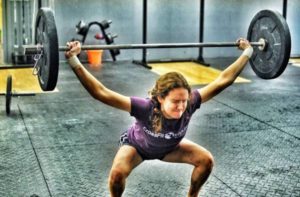 trouble improving your bench. Overhead pressing is important for general shoulder health as well, as I’ve previously addressed. Here’s your test for overhead mobility: stand with your back to a wall, making sure your back makes total contact to the wall.
trouble improving your bench. Overhead pressing is important for general shoulder health as well, as I’ve previously addressed. Here’s your test for overhead mobility: stand with your back to a wall, making sure your back makes total contact to the wall.
Then, press your wrists to the wall, maintaining a perpendicular angle between your forearms and the floor (i.e. your hands should point up, and your forearms should be a straight line). Now bring your arms up, maintaining contact with the wall through your wrists and elbows. Like this.
If you can do this perfectly, your shoulder mobility is just fine, and you need more practice pressing (lighter) weight overhead to work your way up to an overhead press.
Mobility is a pretty big hindrance for a lot of people – but remember, we’re not trying to be supple leopards. Stretch and foam roll to lift.

